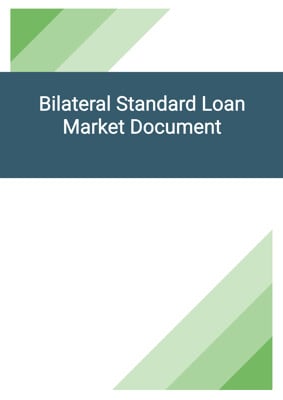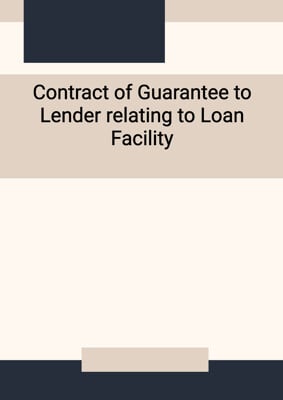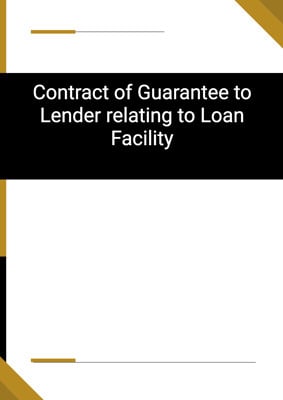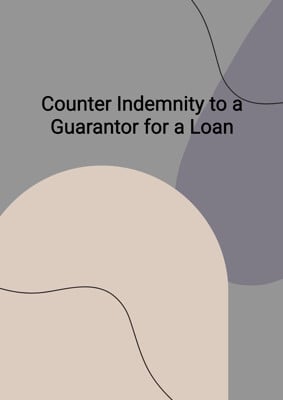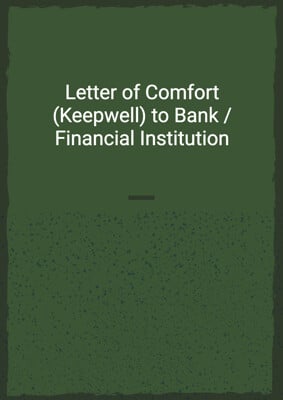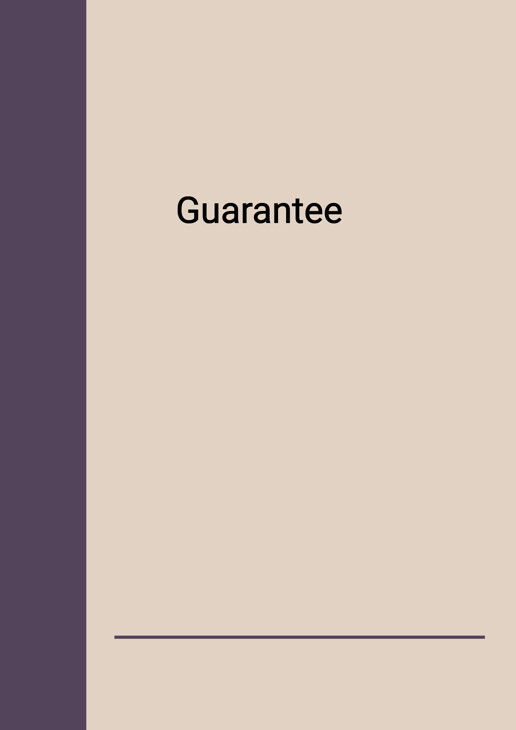
Guarantee
All Money Continuing Guarantee and Indemnity
An All Money Guarantee and Indemnity guarantees and indemnifies any and all obligations from the principal debtor to the lender, whether existing at the time of the guarantee or arising in future. It is a more general guarantee as opposed to specific guarantees and is more favourable to the lender.
How to Tailor the Document for Your Need?
01
Create Document
Fill in the details of the parties. You can click the "Fill with Member’s Information" button to complete it with information saved to your account.
02
Fill Information
Please fill in any additional information by following the step-by-step guide on the left hand side of the preview document and click the "Next" button.
03
Get Document
When you are done, click the "Get Document" button and you can download the document in Word or PDF format.
04
Review Document
The document should be signed by the authorised signatory (or directors of a company) and witnessed to complete the formality.
Document Preview
Document Description
The document titled 'Guarantee' is a legal agreement that serves as a continuing guarantee and indemnity for the payment or discharge of all moneys and liabilities owed by the principal to the recipient of the guarantee. The importance of this document lies in its ability to provide financial security and assurance to the recipient, ensuring that they will be compensated for any outstanding debts or liabilities.
The document begins with a preamble that outlines the purpose of the guarantee and the parties involved. It states that the undersigned parties guarantee the payment or discharge of all moneys and liabilities owed by the principal to the recipient. The guarantee covers both actual and contingent debts, whether owed solely or jointly with any other person, and includes interest, commission, and other lawful charges.
The guarantee also specifies that the undersigned parties agree to pay all costs and expenses incurred by the recipient in relation to the recovery of the guaranteed moneys. This ensures that the recipient is fully compensated for any expenses they may incur in enforcing the guarantee.
The document further states that the guarantee is a continuing security, meaning that it remains in effect until it is terminated by written notice from the undersigned parties. However, the termination of the guarantee by one or more of the undersigned parties does not affect the liability of the remaining parties.
The guarantee provides instructions for making demands or giving notices under the agreement. It states that such demands or notices can be made by any manager, officer, or agent of the recipient, and can be sent by post to the last known place of business or abode of the undersigned parties.
The guarantee also includes provisions regarding the liability of the undersigned parties in the event of the principal's bankruptcy or winding up. It states that all sums of money due or owing to the recipient by the principal shall continue to be due and owing until they are actually repaid, regardless of any bankruptcy or winding up proceedings.
Furthermore, the guarantee clarifies that it is in addition to any other securities or guarantees held by the recipient from the principal. It does not prejudice or affect the recipient's rights under any other agreements or arrangements.
The guarantee also addresses the treatment of any payments or dividends received by the recipient in relation to the guaranteed moneys. It states that such payments or dividends shall be applied towards the ultimate balance owed to the recipient and shall not prejudice the recipient's right to recover the full amount from the undersigned parties.
Finally, the guarantee contains various miscellaneous provisions, including provisions regarding the undersigned parties' liability as joint and several debtors, the effect of invalid or unenforceable guarantees or charges by co-sureties, and the interpretation of terms and references in the document.
In summary, the 'Guarantee' document is a legally binding agreement that provides financial security and assurance to the recipient. It outlines the obligations and liabilities of the undersigned parties and ensures that the recipient will be compensated for any outstanding debts or liabilities owed by the principal.
How to use this document?
To use the 'Guarantee' document effectively, follow these steps:
1. Understand the purpose: Familiarize yourself with the purpose of the guarantee, which is to provide financial security and assurance to the recipient for the payment or discharge of all moneys and liabilities owed by the principal.
2. Identify the parties: Clearly identify the parties involved in the guarantee, including the principal and the recipient. Ensure that their names and addresses are accurately stated in the agreement.
3. Specify the guaranteed amount: Clearly specify the total amount that is guaranteed by the undersigned parties. This should include the principal amount, as well as any interest, commission, costs, and expenses that may be incurred.
4. Determine the liability period: Decide on the duration of the guarantee's liability. The guarantee is a continuing security, but it can be terminated by written notice from the undersigned parties after three months. Clarify that the liability of the undersigned parties remains even if one or more parties terminate their guarantee.
5. Understand the demand and notice process: Familiarize yourself with the process for making demands or giving notices under the guarantee. Any manager, officer, or agent of the recipient can make a demand or give a notice, which should be sent by post to the last known place of business or abode of the undersigned parties.
6. Consider bankruptcy or winding up: Take into account the provisions regarding the principal's bankruptcy or winding up. Understand that all sums of money due or owing to the recipient will continue to be due and owing until they are actually repaid, regardless of any bankruptcy or winding up proceedings.
7. Review other securities or guarantees: Ensure that you understand that the guarantee is in addition to any other securities or guarantees held by the recipient from the principal. It does not prejudice or affect the recipient's rights under any other agreements or arrangements.
8. Understand payment and dividend treatment: Familiarize yourself with the treatment of payments or dividends received by the recipient. Understand that such payments or dividends will be applied towards the ultimate balance owed to the recipient and will not prejudice the recipient's right to recover the full amount from the undersigned parties.
9. Comply with miscellaneous provisions: Take note of the miscellaneous provisions in the guarantee, such as the joint and several liability of the undersigned parties, the effect of invalid or unenforceable guarantees or charges by co-sureties, and the interpretation of terms and references in the document.
By following these steps, you can effectively use the 'Guarantee' document and ensure that all parties understand their obligations and liabilities under the agreement.
Not the right document?
Don’t worry, we have thousands of documents for you to choose from:

